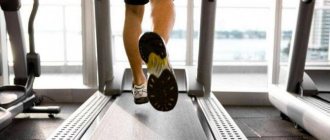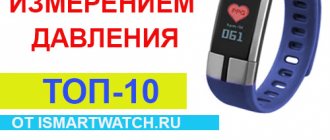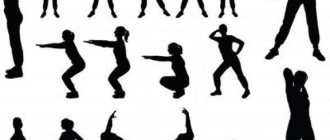What is the normal resting heart rate?
The rhythm of the heart, measured by the pulse, depends on the age, gender, body weight, and fitness of the person. The dynamics can be influenced by many factors: training and level of physical fitness, state of mind, illness, pregnancy, environmental factors, dehydration, overtraining, stress.
Therefore, heart rate (HR), that is, pulse, at rest is an individual thing, but there is an accepted physiological norm. For a healthy adult with a young body, this is 60-80 beats per minute.
In athletes with a trained heart, the resting pulse can drop to 40-50 beats per minute, and this will be their norm - the term “athletic heart” was coined for this.
And often the resting pulse refers to a narrower concept, namely the morning pulse - as soon as you open your eyes and before you get out of bed.
Normal heart rate for an adult: table by age
https://youtu.be/hfCldf6VY7M
The normal heart rate of an adult by year (age) is given in the table:
| Age | Maximum and minimum limit | Average value |
| 15-50 years | 60-80 | 70 |
| 50-70 years | 66-87 | 76 |
| From 70 years old | 72-92 | 81 |
In an adult, the heart rate norms by age and the permissible heart rate limits in a child under 15 years of age differ significantly, which can be seen in the following table:
| Age | Maximum and minimum limit | Average value |
| Up to 3-4 weeks | 115-165 | 135 |
| From 1 to 12 months | 105-160 | 130 |
| 1-3 years | 90-150 | 122 |
| 3-5 years | 85-135 | 110 |
| 5-7 years | 80-120 | 100 |
| 7-9 years | 72-112 | 92 |
| 9-11 years | 65-105 | 85 |
| 11-15 years | 58-97 | 77 |
https://youtu.be/ROEyc0drhWU
Knowing what the normal heart rate is for women and men by age, you can avoid many diseases. Measurements should be taken at rest. Under the influence of other factors (sports, pregnancy), slight deviations are possible.
Heart rate while walking
While walking, there is a slight increase in heart rate. How many heartbeats there will be per minute depends on the person’s fitness. For people leading a sedentary lifestyle, the heart rate can jump to 120, but for people who like to walk, it will remain within 90-100. To calculate the maximum permissible limit, subtract the person's age from 180.
When walking, the permissible heart rate is as follows:
- 15 years - 165;
- 35 years old - 145;
- 55 years old - 125;
- 75 years old - 105.
Heart rate at rest
The resting pulse is determined in the morning. A person needs to sit on a chair and count his pulse. Changing body positions or taking measurements in the evening is not recommended, as the final result will be distorted.
Generally accepted norms at rest:
- adults – 60-80;
- elderly – 70-90;
- teenagers - 70-80;
- children under 2 years old - 90-100;
- newborns - 130-140.
Heart rate while running
While jogging, a lot of stress is placed on the heart. People trying to lose weight should keep their heart rate close to the upper limit. If the goal is to strengthen the cardiovascular system, then you need to stop at a figure not exceeding 60-70%. To calculate the norm, you need to subtract your age from 200:
| Age | Maximum allowable heart rate | Pulse for weight loss | Pulse to strengthen the heart and increase endurance |
| 30 | 170 | 155-160 | 110-120 |
| 50 | 150 | 135-140 | 90-110 |
| 70 | 130 | 115-120 | 70-90 |
If, against the background of an increase in the pulse (within acceptable limits), the pressure readings remain normal, then the development of pathologies will not follow. Elderly people need to be especially careful. Their body is unable to withstand heavy loads.
https://youtu.be/hCcKgHNEIuA
Permissible heart rate during pregnancy
A woman who is expecting a baby experiences increased heart rate around the 5th month. This phenomenon is associated with an increase in circulating blood volume during fetal development. Usually the increase is insignificant and gradually the indicators return to the acceptable limit:
- at 14-26 weeks there is an increase of 10-15 contractions from the norm;
- the maximum increase occurs between 27 and 32 weeks;
- gradual normalization occurs closer to the birth of the child.
https://youtu.be/9JUPsGEMEsE
What can you understand by measuring your morning pulse?
If you regularly measure your pulse in the morning, for example, for a week, you can:
- get an idea of the body’s adaptation to stress;
- you can see how regular running, swimming, cycling, skiing - any cyclic sports - affect heart training;
- assess the quality of restoration;
- track the onset of overtraining;
- track the onset of the disease;
- understand the level of stress in life;
- understand how acclimatization occurs in the mountains (if you find yourself there).
Tracking athletes' morning heart rate is becoming an important marker for assessing training. Every serious athlete records their resting heart rate in a diary, which also displays their heart rate zones during training. These indicators are assessed by the trainer, since an increased or decreased heart rate may indicate problems, insufficient or excessive training volume.
And it is the pulse that is used as a guide when undergoing acclimatization in the mountains, be it training at altitude or climbing. After rising to a height, the body adapts to “pump” blood throughout the body in conditions of less oxygen supply and increased pressure. A morning heart rate returning to normal indicates that acclimatization has taken place and you can continue training or climbing.
Read on the topic: Pulse zones: what heart rate to run at
photo: Nastasic/Getty Images, source: runnersworld.com
How to measure pulse?
This indicator is used to characterize fluctuations during contraction of the heart muscle. As blood passes through the vessels, it hits their walls. These shocks are called “pulse”. Heart rate - the norm in adults - is characterized by the following indicators:
- synchrony – determines whether the pulsation is the same in symmetrical areas of the body;
- regularity - indicates the uniformity of contractions;
- tension - shows whether resistance is felt when pressing on a blood vessel.
There are venous, arterial and capillary pulses - the norm varies significantly by age. Impact frequency can be measured in several places on the body:
- on the ulnar artery;
- at the temples;
- on the wrists;
- in the armpits;
- in the groin;
- under the knees;
- at the temporal artery above the brow arches;
- on the feet;
- at the corners of the mouth;
- on the neck.
Pulse measurement can be carried out in two ways:
- Hardware
– it involves the use of smart gadgets. The measurement is performed using special watches, bracelets, pulse oximeters and electronic tonometers. The devices automatically calculate the data, process it and display the results on the watch face. - Palpation
is a classic method. Although the pulsation frequency can be counted in different parts of the body, this indicator is most often determined from the artery located in the wrist. To get reliable results, you need to measure your pulse correctly.
The palpation method includes the following actions:
- Take a watch or stopwatch. This device is necessary in order to accurately measure a certain period of time.
- Before counting your pulse, you need to sit down and calm down.
- The left wrist should be clasped with the right hand or simply the fingers should be applied to the artery.
- You need to time it (30 or 60 seconds) and count the number of blows during this period of time.
- The results obtained are compared with the normal heart rate by age - the table helps to assess the real condition.
- If necessary, repeat the measurement on the second hand.
However, there are a number of factors that influence the results obtained. They do not make it possible to identify accurate data. These factors include:
- smoking and drinking alcohol;
- severe hunger;
- sex;
- massage;
- prolonged exposure to the sun or frost;
- relaxing baths;
- drinking hot food or drinks;
- staying near fire for a long time;
- menstruation.
How to measure resting heart rate
The best way to measure your resting heart rate to track your body's progress or detect any heart problems is to measure your heart rate immediately after waking up. That is, in the first moments when you opened your eyes and before you got out of bed.
- To measure your resting pulse after waking up, you need to slowly take a watch with a stopwatch and feel one of the arteries. You can measure the pulse on the radial artery (wrist), on the temporal artery (temple area), on the carotid artery (on the neck under the jaw on the right side), on the popliteal artery (the bend under the knee), on the brachial artery (inner side on the elbow) .
- Just count the beats for 15 seconds and then multiply the number of beats by 4 to get the beats per minute result. Or, to calm yourself, count for all 60 seconds.
- It’s easier to use wearable gadgets – a smart bracelet or a fitness watch. If you sleep with them on, the device will count your pulse while you sleep, which provides the most accurate data. At the same time, you can find out the frequency of breaths, intervals between beats, and heart rate variability.
- These same methods can be used during the day, but you need to take into account that the daytime resting pulse is higher than the morning one, exactly in the same physiological norm - 60-80 beats.
- The same methods apply if you lie down and rest for 10 minutes without moving. Then the resting pulse will be equal to the morning one.
How to alleviate the condition if a person’s maximum permissible heart rate is
If a person has the maximum permissible pulse, then you need to call an ambulance and try to alleviate his condition:
- ensure the flow of fresh air - open the windows, unbutton or remove/cut clothes: nothing should restrict the patient’s chest or neck;
- position the person in a horizontal position so that the head is slightly higher in relation to the body and legs;
- wash it, sprinkle your face with cool water;
- give tincture of valerian or motherwort to drink;
- Place a Validol or Anaprilin tablet under your tongue.
It is highly advisable to measure the patient’s blood pressure before the doctor arrives. If it is elevated, then it is advisable to give him a tablet of Captopril, Verapamil or Metoprolol.
If signs of clinical death appear, then only 4 minutes remain in order to save a person with the preservation of all functions - as soon as problems begin in the blood supply to the cerebral cortex, the vital activity of the organs is reduced for a maximum of another 7 minutes, but after 5 minutes the brain cells begin to die brain against the background of acute oxygen starvation. What you can do:
- artificial respiration;
- heart massage.
The manipulations are performed according to a clear formula - for 30 clicks (“pumping” of the heart), 1 inhalation and exhalation are made. As soon as the pulse begins to be felt, a reaction to light appears, resuscitation can be stopped, because this indicates the patient’s return to life, although there may be no breathing for a few more minutes.
The fatal pulse for a person is calculated on a strictly individual basis, but an indicator of 160-170 beats is already considered critical. If the rate reaches 200 beats per minute at rest, then you need to call an ambulance - resuscitation measures are required to avoid death. Before the arrival of specialists, even a person without medical education can provide assistance to the patient.
What does resting heart rate depend on?
Resting heart rate is influenced by many factors. Some of them are objective:
- physical activity;
- floor;
- age;
- pregnancy and hormonal levels.
And less obvious factors:
- emotions;
- illness;
- dehydration;
- eating;
- acclimatization;
- change of time zones.
When they talk about these factors, they most often mean deviations from the norm of the resting pulse - its increase by 10-20 beats per minute and maintaining this state for some time.
Indicators in a child
Heart rate in children is individual, varies, and depends on many factors. Causes of a high heart rate (as well as a low one) include physical activity or lack thereof, general health, environmental influences, and the child's current mood.
Children usually have a higher resting heart rate than adults. A newborn's heart beats 160 times/min; 12-year-old children usually have a pulse of 90–100 beats/min. The indicators for girls and boys are no different. The resting heart rate reaches adult values after 15 years.
Common values:
| Age, years | Average number of contractions per minute |
| Newborns | 140 |
| 1 | 130 |
| 2 | 120 |
| 4 | 110 |
| 6 | 105 |
| 8 | 100 |
| 10 | 90 |
| 12 | 80 |
| 15 | 75 |
Resting heart rate in long-distance runners
The normal resting heart rate for a young healthy person is 60-80 beats per minute. But a different picture and a different norm is observed among long-distance runners and other athletes involved in cyclic sports - cycling, swimming, skiing.
Many amateur athletes, and even more so professionals, say that their resting heart rate is plus or minus 40 beats per minute, and for some endurance athletes, the heart rate can drop to 20-30 beats at night during sleep.
It is generally believed that a low resting heart rate is a sign of a trained heart, and indeed this is how the body’s normal adaptation to extreme loads manifests itself. In the case of this so-called normal adaptation, the low resting pulse compensates for the stroke volume of the heart.
And if at this moment the athlete does not complain of weakness, dizziness, fatigue, if training is not incredibly difficult and performance does not drop, then a low resting pulse indicates a trained heart, capable of making fewer beats while pumping the same volume of blood throughout the body.
But at the same time, a low heart rate at rest and especially during sleep can indicate poor heart function. In any case, regularly monitoring your resting pulse and reflecting on your general condition will help you decide whether it’s time to see a doctor or not, time to reduce your loads and review your training plan or not.
Assessment of the body's condition
By comparing the results of measuring the pulse with the generally accepted norm, the doctor can make an assumption about a particular disease of the patient. The heart rate depends not only on the functioning of the cardiovascular system. The pulse reacts to a huge number of inflammatory, infectious and other pathological processes occurring in the body. That is why a doctor who arrives to see a patient first measures his heart rate.
If a person is relatively healthy, but is often bothered by the feeling of an increased or, conversely, slow heartbeat, the reasons should be looked for in the characteristics of the functional state (FS) of the body.
FS is one of the fundamental properties of a living organism to adapt, or adapt, to environmental conditions and physical stress. This ability varies from person to person.
Athletic, trained people have a high functional state.
In trained people, the risk of developing heart rate disorders is minimal
Sedentary people who lead an unhealthy lifestyle, on the contrary, are characterized by low adaptive ability and, as a result, an increased tendency to become ill.
There are 3 categories of functional states:
- norm – high (satisfactory) adaptation;
- increased tension in adaptation mechanisms (slight deviation from the norm);
- unsatisfactory adaptation (depletion of the body's regulatory systems).
To assess FS in cardiology and sports medicine, three main testing methods are used:
- Ruffier's test. Heart rate is measured at rest, then immediately after 30 squats and 1 minute after rest. The values are added, multiplied by 4, subtracted by 200 and divided by the person’s age. The result is compared with the index norm - from 0 to 21. The higher the result, the worse the FS.
- Martinet's test. In this case, not only heart beats per minute are measured, but also blood pressure (BP). Measurements are taken 3 times for each period of time - at rest, after 20 squats with arms thrown forward and during the recovery period. The increased heart rate is compared with the norm - no more than 12 beats per minute.
- Orthostatic test. Using a sensor on the index finger, heart rate is measured in a lying position. Then the subject abruptly assumes a vertical position, the change in pulse is recorded and compared with the norm. Normally, the pulse increases by 10-12 beats per minute.
Functional states are inextricably linked with the heart rate rate - the higher the level of adaptation, that is, the body’s preparedness for physical activity, the lower the heart rate rate for a particular person.
How regular running, swimming, cycling, skiing affect your resting heart rate
Regular endurance training in sports such as running, skiing, swimming, cycling leads to athletic adaptation of the body and especially the cardiovascular system.
When engaging in cyclic sports, the amount of fat in the body decreases, cholesterol levels decrease, and the proportion of so-called high-density lipoprotein cholesterol increases - along with it, the ability to resist cardiovascular diseases increases.
In addition, the volume of the heart and lungs increases, and the blood vessels dilate. Particularly interesting metamorphoses occur with the heart. Its density increases, the muscle walls become thicker. In athletes, during physical activity, the heart beats less often, but stronger, which is associated with the increased volume (or capacity) of the left ventricle of the heart. This makes it easier for the heart to pump blood throughout the body with each beat, which leads to a decrease in resting heart rate.
A heart that has undergone such changes during adaptation is called “sports”, and this is a normal phenomenon when getting used to physical activity. Interestingly, this condition was previously considered a pathology.
List of necessary examinations
To select a competent, individually designed treatment regimen, the doctor needs to know the causes of rhythm disturbances. A thorough differential diagnosis will help to establish them, which, in addition to collecting an anamnesis, includes:
- assessment of specific reactions during physical examination and palpation;
- determination of neurological and nephrological status (state of the central nervous system and urinary system);
- laboratory blood tests (biochemical, hormone tests, etc.);
- echocardiography;
- ultrasound diagnostics;
- electrocardiography.
All these studies are necessary to determine the underlying disease causing the heart rate failure.
Normal heart rate at rest depending on age
The physiological norm of heart rate differs in people of different ages - from the first days of life to old age.
- For the first month of life, the lower threshold of normal heart rate is 110 beats per minute; for children in the first year of life – 100 beats per minute.
- In children under two years of age - 95 strokes.
- In children aged 2 to 6 years – 85 strokes.
- From 6 to 8 years old – 75 strokes.
- From 8 to 10 years – 70 strokes.
- Then there is a wide age category from 10 to 50 years - the normal heart rate is considered to be from 60 to 80 beats per minute.
- In older people, the heart rate is slightly higher - from 75 to 90 beats per minute.
What is pulse
The pulse is a rhythmic oscillation of the vascular walls corresponding to heart contractions. Pulse is one of the main criteria for assessing the normal functioning of the cardiovascular system. This indicator indicates the rhythm of heart contractions, their strength and the filling of the bloodstream.
If the rhythm of the pulse fluctuations is disturbed, the doctor suspects the presence of heart pathology.
The following factors can influence this:
- excessive consumption of coffee drinks,
- psychological overload,
- stressful conditions,
- hormonal imbalance.
In addition to the rhythm of the pulse, the frequency of its oscillations is important. Oscillation frequency is the number of pulse oscillations per minute. In a person without disorders of the cardiovascular system, in a calm psycho-emotional and physical state, this indicator ranges from 60 to 90 pulse waves per minute.
Resting heart rate in men
The resting heart rate of healthy young men and women differs by about 10 beats.
Firstly, the structure of the body is fundamentally different. Men, for example, have a larger blood volume - 65 ml per kg of body weight, and women - 60 ml per kg. The male heart is slightly larger in volume, which means it is capable of “pumping” a larger volume of blood in one cycle of work, and therefore makes fewer beats.
Secondly, men's maximum oxygen consumption is higher, which also affects heart rate due to its better ability to transport oxygen throughout the body through the blood.
The resting heart rate in men who engage in intense training can reach 50 beats per minute or even lower. This will be the norm of a “sports heart”. In a non-athletic healthy man, the pulse should be within the physiological norm - 60-80 beats at rest.
photo: Guido Mieth/Taxi/Getty Images, source: lifewire.com
What do abnormalities in cardiac activity indicate?
The number of heartbeats is associated with a disturbance in its rhythm (cardiac arrhythmia). Physiologically, a low heart rate is common in athletes and indicates a stronger heart that can pump more blood (vagotonia).
Arrhythmia
Cardiac arrhythmia is a disorder of the heart rhythm that causes disruption of its activity. For example, in a calm state the heart beats, as if running. Symptoms of arrhythmia:
- cardiopalmus;
- feeling of cardiac arrest;
- irregular chaotic pulse;
- chest pain;
- weakness;
- fatigue;
- disturbance of consciousness;
- lack of breathing.
You can calm your pulse during arrhythmia with the help of special medications prescribed by your doctor.
Bradycardia
The next disorder characterized by low heart rate is bradycardia, in which the actual heart rate slows down to less than 60 beats per minute. in men and less than 65 beats/min. among women. This disorder can be caused by a heart attack, intracranial injury, or certain medications taken.
Tachycardia
The opposite of this disorder is tachycardia, in which the number of heart contractions increases, amounting to more than 100 beats/min. in men and 110 beats/min. Among women. This condition most often occurs during physical overexertion, in stressful situations. However, tachycardia may also indicate the presence of a febrile illness, anemia, heart failure, intoxication, or a thyroid disorder. In such cases, in deciding how to calm the pulse, eliminating the primary disorder or disease plays an important role.
Resting pulse in women
In the female body, everything is somewhat more complicated. The resting pulse rate in women is usually higher than in men, and fluctuates in the mentioned range of 60-70 beats per minute, although in female athletes it can also reach 50 beats.
Resting heart rate in women is greatly influenced by hormonal levels, even within one menstrual cycle. In the first phase of the cycle, the oxygen capacity of the blood decreases, and, as a result, aerobic performance decreases. At this time, you can observe an increase in resting heart rate and heart rate during training by 10 beats.
Approximately the same thing happens in the third phase - physiologists studying the bodies of female athletes observed a sharp drop in performance and the achievement of maximum values of working oxygen consumption. In the final phase of the menstrual cycle, an increase in heart rate can again be observed due to vasoconstriction and increased blood pressure.
Further in a woman’s life cycle, the pulse rate is greatly influenced by menopause - the resting beat frequency becomes higher, somewhere around 70-80 beats. Pregnancy also changes the resting heart rate. At the beginning of pregnancy, the resting heart rate begins to rise, increasing by an average of 10 beats. By the third trimester - by 15 strokes. When determining what is normal for each woman, you need to build on knowledge of the resting pulse before pregnancy.
Menstrual cycle and running: is it possible to train on menstrual days?
Features of bradycardia
https://youtu.be/Lo39cx9iw4A
A slowing of the heart rate to 50 beats or below is called bradycardia. It is a sign of physiological and pathological factors. In the first case, the list of reasons for a decrease in heart rate is as follows:
- During sleep, a person's metabolism slows down, body temperature drops slightly and heart rate decreases by about 10% of normal. The reason for the change in indicators is the complete relaxation of the body.
- Stimulating reflex zones (eyeballs, carotid artery) can inadvertently cause a slight slowing of the pulse.
- In older people, bradycardia can be a consequence of age-related cardiosclerosis. Areas of connective tissue scattered throughout the myocardium impair cardiac contractility, which contributes to a decrease in heart rate
- When exposed to cold for a long time, the heart rate slows down as a protective reaction. The body begins to save resources in order to resist adverse effects longer.
- Constant physical activity forces the heart to work harder than it should. Tissue hypertrophy begins, against the background of which bradycardia develops. For professional athletes, a heart rate in the region of 40-45 beats per minute is considered normal.
The pathological form of bradycardia is a consequence of the following factors:
- inflammatory diseases of the heart muscle;
- myocardial infarction;
- taking antihypertensive medications;
- impulse conduction disturbance;
- hypothyroidism (thyroid hormone deficiency);
- hypotension (low blood pressure);
- stomach ulcer;
- high intracranial pressure.
If it is not possible to identify the causative factor, a diagnosis of “idiopathic bradycardia” is made. If it is not accompanied by other disorders and the symptoms are not particularly pronounced, then it is also equated to physiological forms.
Why is your resting heart rate high?
We figured out what is the normal heart rate at rest and what can be considered objective factors influencing it - this influence is not considered a deviation from the norm. But there are factors that cause the resting heart rate to increase and deviate from the norm. Such moments need to be recorded and probably corrected.
First you need to determine the reason for the change in resting heart rate (except for objective factors):
- If in the morning you record an increase in heart rate - 5-6 beats higher than usual - most likely, overtraining is approaching, and you are observing its early stage.
- A high resting heart rate during the day - 10 beats higher than usual - can also be a sign of approaching overtraining, and also a viral disease. You need to take your temperature and monitor other symptoms. With each degree of temperature, the resting pulse will increase by 10-15 beats per minute. During the recovery period after illness, your resting heart rate will also be higher than normal.
- Environment, namely heat. When the ambient temperature is high, your body temperature will also rise. The body strives to cool down, the blood vessels dilate, the heart beats faster, and the resting pulse becomes higher.
- Emotions. Excitement, for example, before a public speaking or exam, laughter at a great comedy, sadness and tears - all these things can briefly change the resting pulse, most often increasing it.
- More serious stress already affects the autonomic nervous system, which regulates the work, including the blood vessel system. Certain processes lead to changes in the functioning of the circulatory system, the release of cortisol and adrenaline. The body “tenses”, prepares for danger, and the heart rate rises.
- Many factors can cause your resting heart rate to fluctuate upward. Flights and transfers, sleepless nights, time zone changes, too much mental and moral stress, even working in a stressful, noisy environment.
- Eating. An increase in heart rate at rest within 10-15 minutes after eating is a normal physiological state, this is especially true when overeating. Plus, after eating, metabolism increases, so an increase in resting heart rate after eating is normal.
However, a noticeable and sustained increase in heart rate after eating is possibly gastrocardiac syndrome. This may indicate diseases of the gastrointestinal tract or endocrine system. It makes sense to pay attention to other symptoms and consult a doctor.
Excess weight. Normal pulse. Psychotype.
There is no such person for whom physical activity would be harmful. You just need to use the right type of physical activity, and dose the load in accordance with the desired result and state of health. The daily requirement of an adult for physical activity is at least one hour. Experts believe that with proper nutrition, 20 minutes of exercise three times a week is enough to maintain good shape. Let's determine what physical form YOU are in:
What is your weight norm and where does excess weight begin?
Using the table No. 1 you can determine whether you are normal or overweight .
You need to know that determining your ideal weight directly depends on indicators such as body type and age. To determine what body type you are, find the narrowest part of your wrist (at the knuckle) and measure it. If your wrist volume is more than 16.5 cm, this means that you have an endomorphic type and nature has endowed you with a dense physique. For a mesomorphic type, with an average build, this value will be 14 - 16.5 cm. And for an ectomorphic type, it will be less than 14 cm and the physique will accordingly be fragile.
Ideal weight +2 kg is the weight norm. Excess weight occurs when this value has already been exceeded by 10%. If this excess is 20% or higher, then we should talk about obesity.
According to scientists, a woman’s waist should not exceed 88 cm in circumference. And you shouldn’t assume that being overweight is just a “cosmetic” disadvantage. Not at all. Obesity leads to a lot of diseases. Here are some of them: hypertension and diabetes, which obese people suffer from three times more often than thin people; atherosclerosis will also occur here twice as often; followed by heart disease; gallstones are forming; excessive pressure on the joints causes lumbar, knee and hip osteochondrosis, etc.
Depending on the type of figure, a person gains weight in different ways. When excess fat forms around the waist and above, this is the “apple” body type, where the likelihood of cardiovascular disease is greatest. Women with a pear-shaped figure are the most common; a feature of this type of figure is the grouping of fat deposits in the hip area.
Table No. 2 will help you determine your weight norm, taking into account your age and physique
| Height (cm) | Body type | ||||||||
| Fragile | Average | Dense | |||||||
| Up to 35 years old | From 35 to 45 years | From 45 years old | Up to 35 years old | From 35 to 45 years | From 45 years old | Up to 35 years old | From 35 to 45 years | From 45 years old | |
| 147 | 42 | 45 | 45 | 46 | 50 | 51 | 51 | 56 | 58 |
| 150 | 43 | 46 | 46 | 48 | 52 | 53 | 53 | 58 | 60 |
| 152 | 44 | 47 | 47 | 49 | 53 | 54 | 54 | 59 | 61 |
| 155 | 45 | 48 | 48 | 50 | 54 | 55 | 55 | 60 | 62 |
| 157 | 47 | 50 | 50 | 52 | 56 | 57 | 57 | 62 | 64 |
| 160 | 48 | 51 | 51 | 53 | 57 | 58 | 59 | 64 | 66 |
| 162 | 50 | 53 | 53 | 56 | 60 | 62 | 62 | 67 | 69 |
| 165 | 51 | 54 | 54 | 57 | 61 | 63 | 63 | 68 | 70 |
| 167 | 53 | 56 | 56 | 59 | 63 | 64 | 65 | 70 | 72 |
| 170 | 56 | 59 | 59 | 61 | 65 | 66 | 67 | 72 | 74 |
| 172 | 57 | 60 | 60 | 63 | 67 | 68 | 69 | 74 | 76 |
| 175 | 58 | 61 | 61 | 64 | 68 | 69 | 71 | 76 | 78 |
| 177 | 60 | 63 | 63 | 66 | 70 | 71 | 73 | 78 | 80 |
| 180 | 62 | 65 | 65 | 68 | 72 | 73 | 74 | 79 | 81 |
| 182 | 63 | 66 | 66 | 69 | 73 | 74 | 75 | 80 | 82 |
Don't be alarmed if you have a slight deviation from the norm. This does not lead to pathologies, but the psychological state can spoil well. After all, it is very important for a woman to feel attractive; she needs to be satisfied with herself. Therefore, when you see reality, accept it correctly and do not become unhappy, this will only worsen your general condition, it is better to start rehabilitation as soon as possible.
If you are already suffering from obesity, stop living in illusions, the weight will not disappear on its own, and you will never cope with the desire to eat without willpower and abstinence. Understand that food, like any pleasurable drug, makes us addicted. And he hopes that today I will eat, and tomorrow everything will be different; in no case is it necessary. You need to clearly understand that any psychological dependence can be treated with time, with the help of separation from the object of pleasure for as long as it takes to achieve complete indifference. And food, of course, appears here in an insidious form. After all, it is completely impossible to refuse it. But thank God it’s not necessary. Your task is to begin to strengthen your willpower, your character, your organization. It is self-discipline and nothing else! Seriously review your diet and include physical activity in your daily routine.
It is important to correctly determine the physical activity that is suitable for you and build a training regimen:
What's your pulse?
Determine your heart rate at rest, after waking up, while still in bed. (Table 3).
| Pulse rate. State of rest. (bpm) |
| age | Bad form | Good form | Great shape |
| 20 – 29 | More than 96 | 72 – 95 | Under 71 |
| 30 – 39 | More than 98 | 72 – 97 | Under 71 |
| 40 – 49 | More than 99 | 74 – 98 | Under 73 |
| 50 and older | More than 103 | 76 – 102 | Less than 75 |
It is necessary to determine how quickly your heart rate recovers after exercise. Do a short exercise: at a calm pace, breathing evenly for three minutes, go up and down one step. Then, after resting for 30 seconds, measure your heart rate (Table 4).
For those who are in good physical shape and have a normal pulse, our congratulations. You are advised to start with light exercises and gradually increase the load. If it so happens that you are in poor physical shape, then you simply cannot delay training any longer. But first, a mandatory condition is to visit a doctor if you are over 40 years old, and it would also be a good idea to see a doctor for those who are under 40, but already over 30 years old (Table 5). The normal heart rate during training is the training zone - at maximum load (ML), the heart works at 60–90% of it. To calculate your MR, subtract your age in annual terms from 220. The maximum permissible load is inversely proportional to age, therefore, the older we get, the lower this limit is.
| ||||||||||||||||||||||||||||||||||||||||||||||||||||||||||||||||
Pulse during overtraining
Separately, we need to dwell on the topic of resting pulse during overtraining.
It was said earlier that if in the morning an increase in heart rate of 5-6 beats per minute is recorded, this means that overtraining is approaching or has already occurred. Exactly the same story with a very low resting heart rate - for example, 25 beats per minute. This is also a symptom of overtraining.
Read on topic: Overtraining in running: 10 symptoms of insufficient recovery
Imagine, your heart beats at a rate of actually less than one beat every 2-3 seconds. This is not the norm, and too low a resting heart rate, as well as too low or high heart rate during training, are symptoms of overtraining. Excessive loads during intense training have led to this, and this suggests that the training program needs to be reconsidered.
Additional rest will make more sense. You also need to consult a doctor or trainer if your resting heart rate becomes unstable. This is especially true when accompanying symptoms of overtraining appear - dizziness, weakness.
High resting heart rate: what to do
When the resting pulse is elevated and this is not due to objective reasons (age, gender, etc.), you can try the following:
- Quickly calm down or cool down by drinking a glass of cool water and doing breathing exercises - for example, inhaling deeply for 5 seconds and exhaling for 3 minutes.
- If the increase in heart rate is associated with emotions, try the psychological method of “grounding.” You need to get up and walk around the room or on the street, concentrating on momentary sensations, such as your foot touching the ground, and on what you see around you.
- A high morning heart rate indicates under-recovery - you need to get better sleep and reduce stress.
- If your heart rate has dropped or risen due to overtraining, rest and change your training plan.
- A resting pulse that is too low may indicate bradycardia, while a resting pulse that is too high may indicate tachycardia. Only a doctor can recognize and solve these problems.
Read on topic: Running at low heart rate: how and why to train at low intensity
Dangerous pulse for humans: causes
The causes of a dangerous pulse for a person can be:
- alcohol, drug addiction;
- acute lack of potassium and magnesium in the body;
- food poisoning, poisons, toxic gases;
- mental or nervous disorders;
- pathologies of the endocrine system that occur in severe stages.
Critically high pulse rates can also occur against the background of coronary heart disease, cardiosclerosis, myocarditis, heart defects of various nature and origin, acute blood loss, traumatic/mechanical damage to the heart muscle. Typically, the listed diseases are under the control of doctors - patients are registered, undergo regular examinations/diagnosis, and take specific medications on a regular basis.
But if there is no therapy, the patient does not get rid of bad habits and does not comply with the recommendations/prescriptions of the attending physician, then the death outcome against the background of the highest possible pulse rate is quite predictable.










